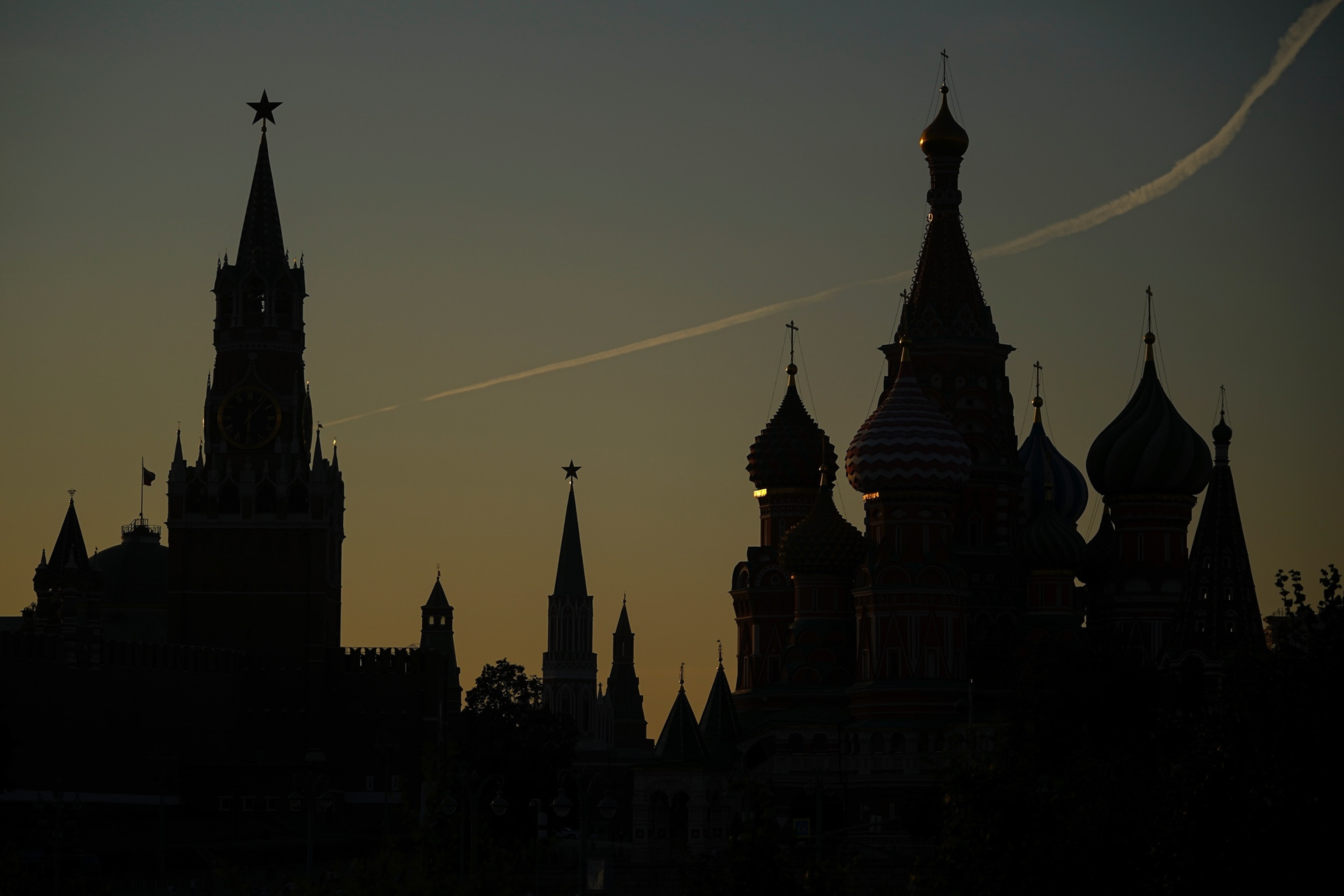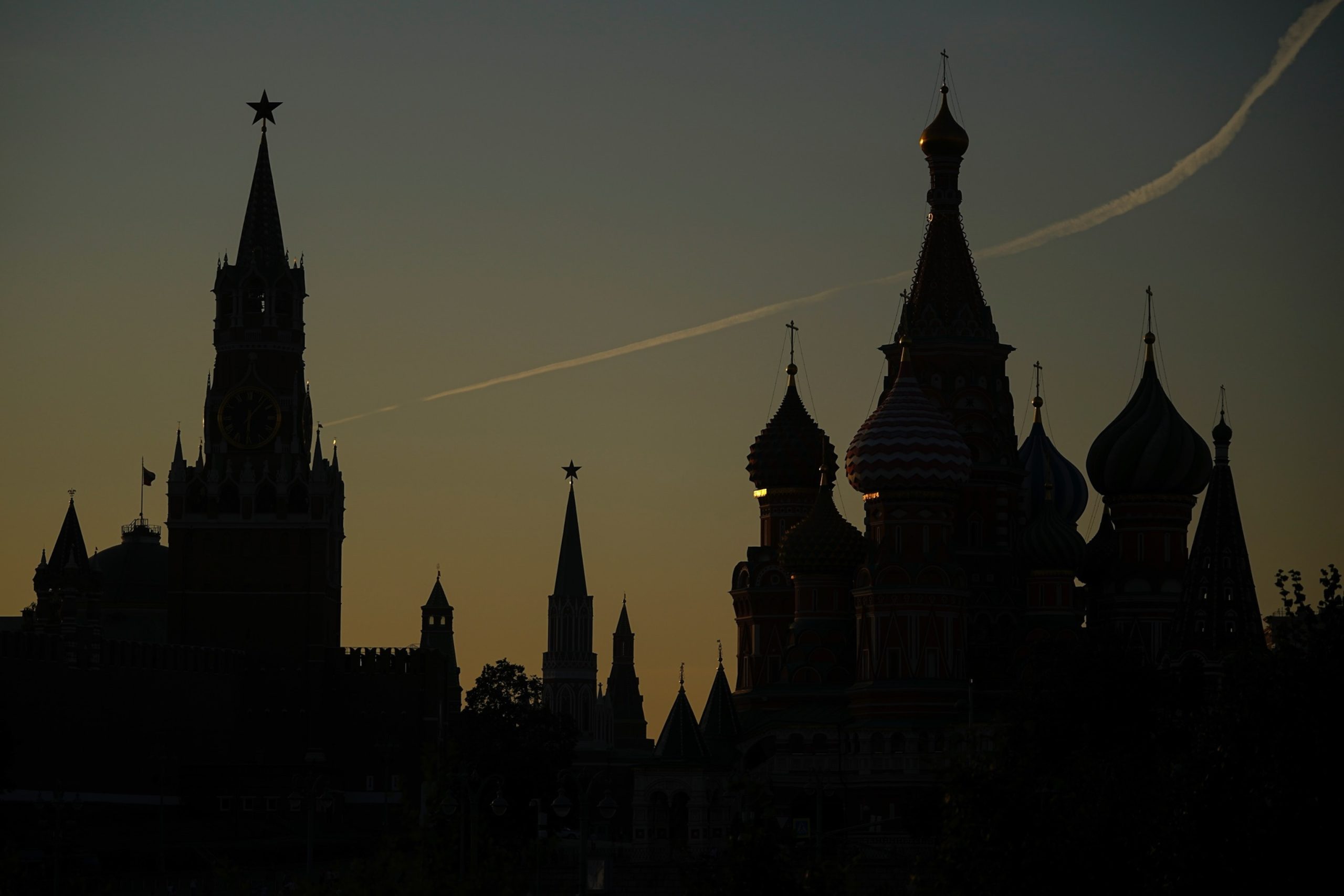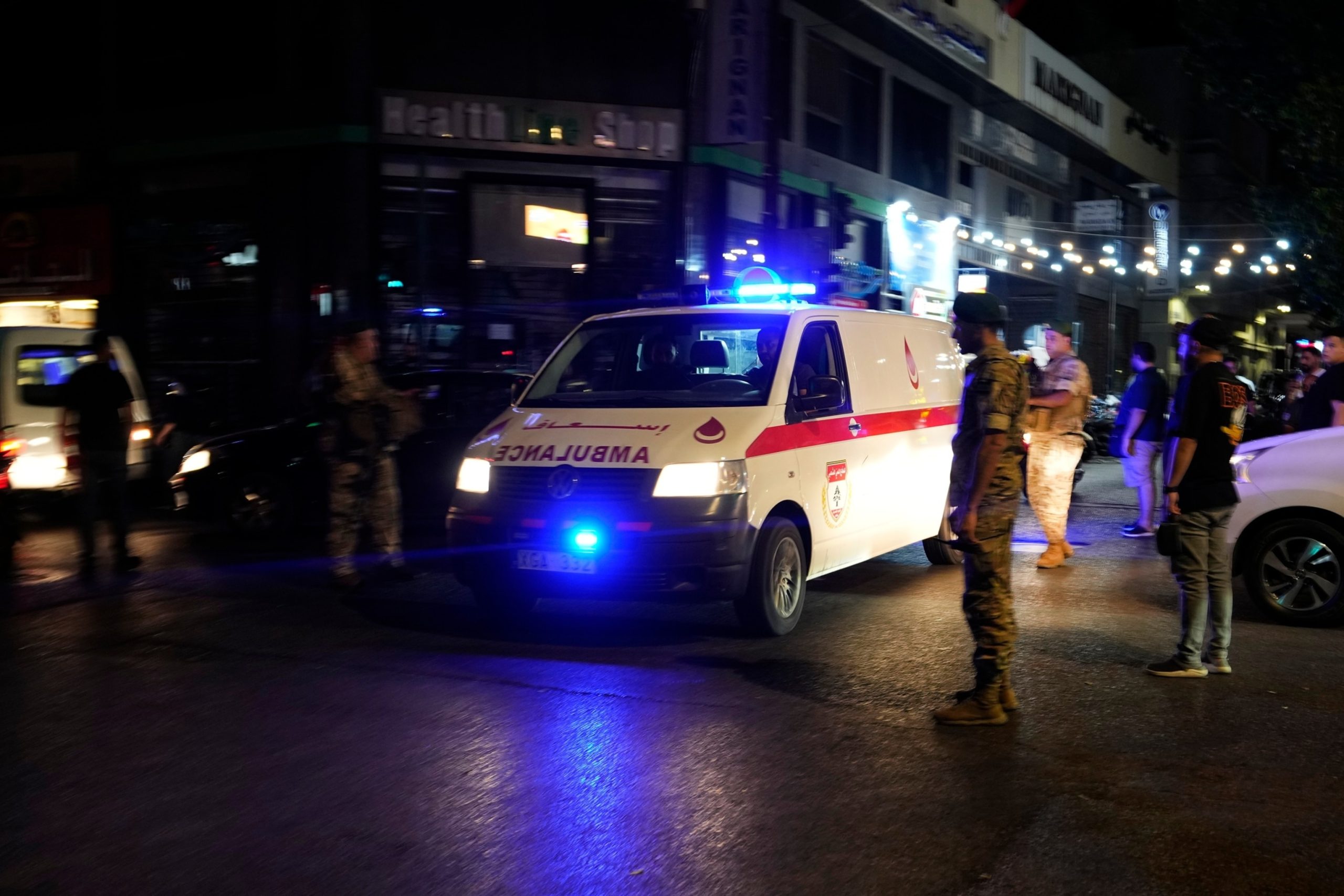LONDON — Dozens of Russian drones were launched overnight in an attack targeting regions throughout Ukraine, President Volodymyr Zelenskyy said.
Seventy-two of the 76 Shahed drones that were launched were destroyed by Ukrainian anti-aircraft defenses, the Ukrainian air force said. The drones targeted regions throughout Ukraine, including Kyiv, the capital, officials said.
At least two regions in Russia were also targeted overnight by Ukrainian drones, the Russian Ministry of Defense said early Saturday.
“Ten UAVs were destroyed over the territory of the Kursk region and nine over the territory of the Belgorod region by air defense systems on duty,” the ministry said on Telegram.

The Spasskaya tower of the Kremlin and St. Basil’s Cathedral are seen at the sunset in Moscow, Russia, Friday, Sept. 13, 2024.
Pavel Bednyakov/AP
The overnight launches between Ukraine and Russia followed talks on Friday in Washington, where President Joe Biden and British Prime Minister Keir Starmer discussed possibly lifting restrictions on the use of some Western weapons that could be used by Ukraine to strike deeper within Russia.
A decision on whether to ease those restrictions, which Starmer described as a “particular tactical strategy,” was not announced following the meeting.
Russian President Vladimir Putin on Thursday said allowing such long-range strikes would amount to NATO forces becoming “directly involved” in the war.
“If this decision is made, it will mean nothing short of direct involvement — it will mean that NATO countries, the United States and European countries are parties to the war in Ukraine,” Putin said, according to a transcript published by the Kremlin. “This will mean their direct involvement in the conflict, and it will clearly change the very essence, the very nature of the conflict dramatically.”
Zelenskyy and other Ukrainian officials have long been pressing the U.S. and Western allies for permission to conduct strikes deeper in Russia with long-range U.S.-made weapons.

People walk across a pedestrian bridge in city center of Kyiv, Ukraine, Friday, Sept. 13, 2024.
Evgeniy Maloletka/AP
“We need more air-shield, air-defense and long-range capabilities to continue to protect life and our people,” Zelenskyy said in a message in Ukrainian on Saturday on the messaging app Telegram.
The U.S. State Department said Saturday on its official Russian-language social media channels that America’s “goal is to make sure that Ukrainians resist Russian aggression as effectively as possible,” adding, “Putin will continue to suffer strategic failures in Ukraine.”
U.S. Secretary of State Antony Blinken and British Foreign Secretary David Lammy traveled to Kyiv this week to discuss those long-range capabilities, among other topics, with Ukrainian leadership.
“We have adjusted and adapted as needs have changed, as the battlefield has changed, and I have no doubt that we’ll continue to do that as this evolves,” Blinken said on Wednesday.
The two diplomats briefed Biden and Starmer during their White House meeting, according to Downing Street.
Russian Foreign Minister Sergey Lavrov on Thursday said he had “no doubt” that the decision “was taken long ago” to lift restrictions on long-range weapons.
“[A]nd now they are only trying to find the most suitable, acceptable and elegant way of presenting it to the public,” he said in remarks in Moscow.
ABC News’ Will Gretsky, Michelle Stoddart, Molly Nagle, Anne Flaherty, David Brennan, Meredith Deliso and Oleksiy Pshemyskiy contributed to this report.
Military officials have reported a series of overnight drone attacks between Ukraine and Russia, escalating tensions in the region and raising concerns about the potential for further conflict.
The attacks, which occurred in the early hours of the morning, targeted military installations and infrastructure on both sides of the border. Ukrainian officials have accused Russian forces of carrying out the strikes, while Russian officials have denied any involvement and instead blamed Ukrainian separatists.
The use of drones in military operations has become increasingly common in recent years, with both state and non-state actors utilizing these unmanned aerial vehicles for reconnaissance, surveillance, and even offensive purposes. Drones offer a number of advantages over traditional manned aircraft, including lower costs, reduced risk to pilots, and the ability to operate in environments that may be too dangerous for human pilots.
However, the use of drones in conflict zones also raises a number of ethical and legal questions. For example, there are concerns about the potential for civilian casualties and collateral damage when drones are used in populated areas. Additionally, the use of drones blurs the line between combatants and non-combatants, as they can be operated remotely by individuals who may not be directly involved in the conflict.
The recent drone attacks between Ukraine and Russia highlight the growing complexity of modern warfare and the challenges that military officials face in responding to these new threats. As technology continues to advance, it is likely that drones will play an increasingly important role in future conflicts, making it essential for governments to develop clear policies and guidelines for their use.
In the meantime, the international community must remain vigilant and work to de-escalate tensions between Ukraine and Russia before the situation spirals out of control. Diplomatic efforts are crucial in preventing further violence and ensuring a peaceful resolution to the conflict.



